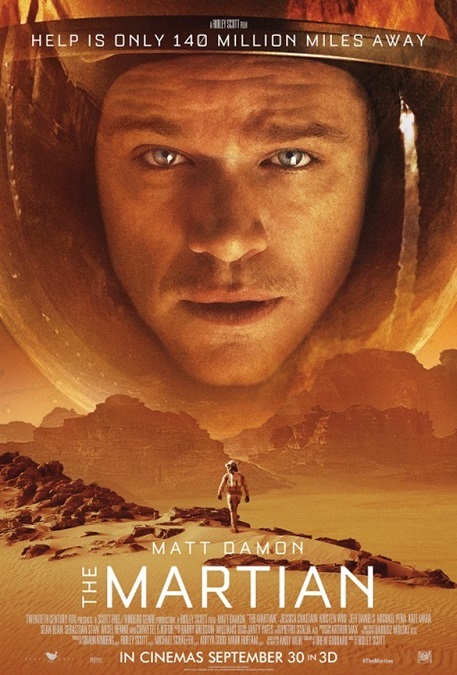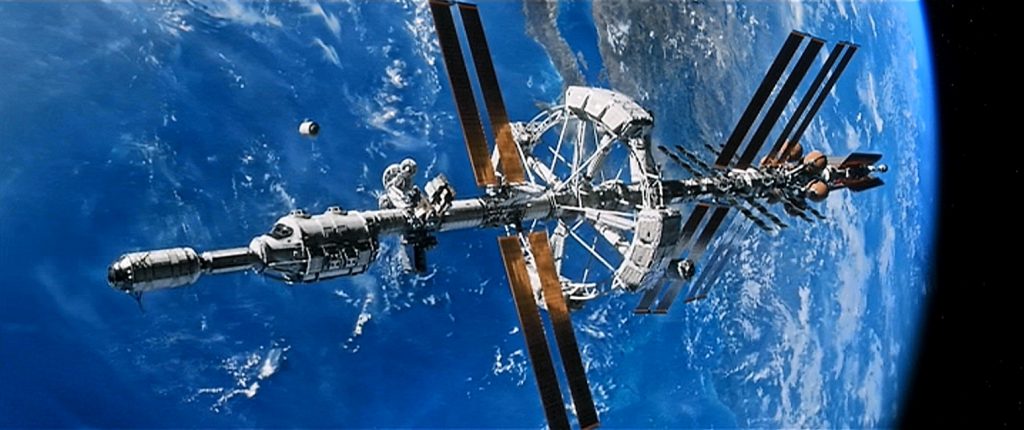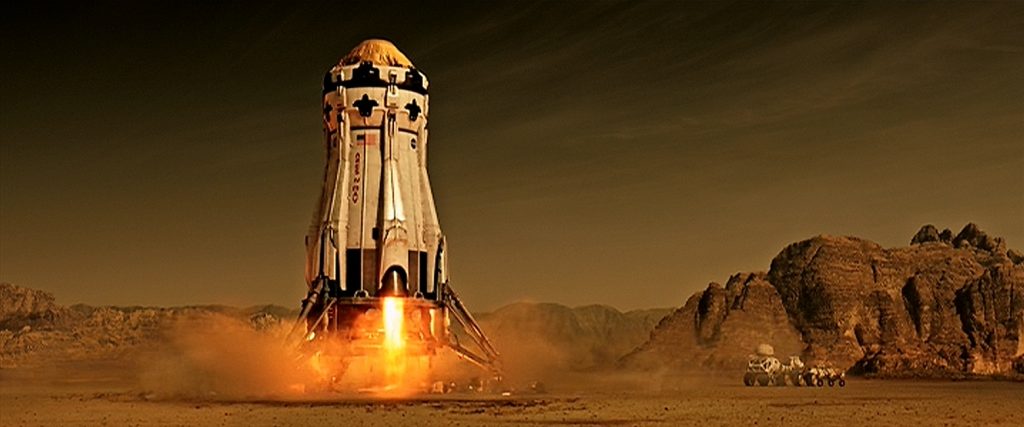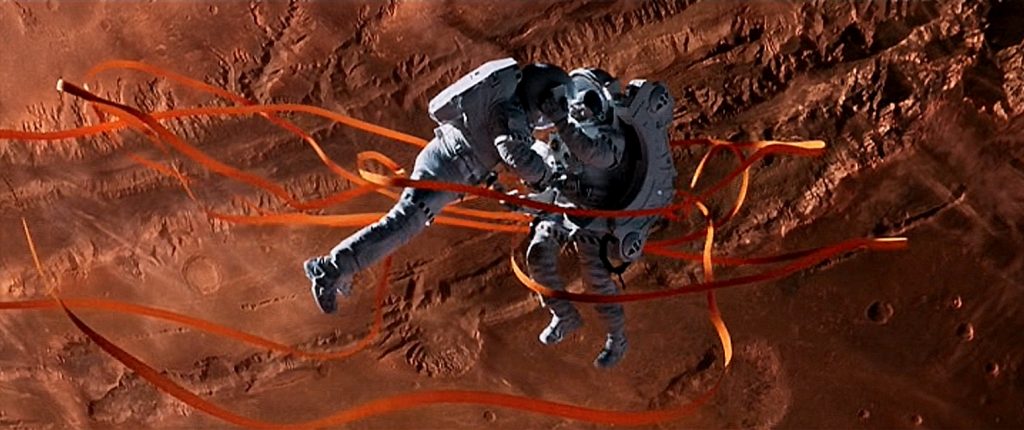



The Martian – 2015

The only reason I’m giving this movie’s visual effects four stars instead of five was, I’ll admit, not the fault of the VFX artists. Unfortunately, they were betrayed by a basic flaw in the script. The Visual effects team did what they were told, but the resulting visuals took me out of the story because they had to throw reality out the air-lock. Strange, for a movie that prided itself on scientific accuracy. Not only did I notice, but I couldn’t get my mind off of the unreality of the effects.
It’s a shame they couldn’t find a more fitting plot point, like maybe an unexpected explosion, to strand the astronaut on the surface of the Red Planet. But here, when a surprise dust storm on the surface of Mars is strong enough to break off a piece of equipment and hurl a shredded piece of metal into Mark Wantey’s gut like an arrow, his crewmates leave him for dead. Of course, the reality is that it would never have happened because the atmosphere on Mars is about 1% as dense as Earth’s atmosphere. That means that a 60mph wind would only be felt as a breeze.
But putting that fact aside, the rest of the effects in the film were just fine. The scenes of weightless astronauts and flying space craft dramatically displayed in front two different planets were pretty spectacular. There were also a couple of pretty amazing launch sequences that were cool to watch. I especially liked the scene where the nose of a space craft has been removed, and then covered with a plastic tarp to reduce the vehicle’s weight. The exciting climax where the stranded astronaut is rescued was even more accurate than the 2013 Best Visual Effects winner, Gravity. This movie understood that gravity and inertia work differently in weightlessness than they do in a planet’s gravitational pull. I guess both movies have their fatal flaws, though they were both pretty enjoyable to watch.
In doing a little reading, I was surprised to learn what another one of the “invisible” visual effects were. Sure, there were the Martian landscapes and sky colors, and those were perfectly executed and consistently believable. But it was the space suit helmets that I would have never guessed. In order to get the right reflections in the helmet visors, like planetary landscapes and not a film crew or lighting set-up, all the visors were completely created digitally in post-production. I never really noticed those reflections, but I’m sure I would have noticed if they weren’t there, or if they showed the wrong thing.
In fact, I think that a lot of the effects in this movie were of that invisible variety, simply because of the nature of the story. It was a movie that was, with the one aforementioned inaccuracy, based in reality and scientific accuracy. We have detailed images of both the Earth and Mars from space. We have enough experience in outer space to know how things move and behave in a weightless environment. Ok, I’m not so certain about being able to propel yourself in outer space by cutting a hole in the hand of your space suit, (he controlled his trajectory awfully well…) but it looked really cool. And this isn’t a documentary, it’s a movie.